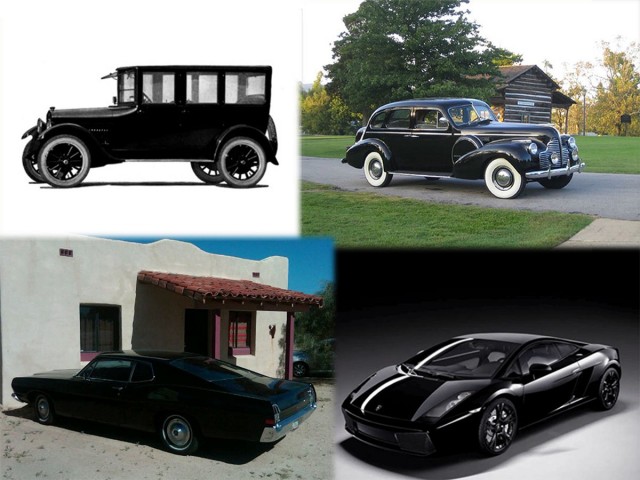- Home
- >
- Preservation Archaeology Blog
- >
- The Archaeologist’s Gaze
Dating techniques are one of first things students learn about in archaeology courses in the United States. Archaeologists—and people more generally—have two primary ways of marking time: absolute (chronometric), or a computed numerical age, and relative, or a sequence of events. One relative dating method is seriation, which is what I’ll discuss in this post. Specifically, though, I’d like to call your attention to something that really makes almost everyone an archaeologist—or, as my title implies, is one way in which nearly everyone looks at the world through an archaeologist’s eyes, whether or not one is aware of it.
You see, we all seriate. Habitually, in fact. When you’re in your car, you’re seriating. You are constantly aware of the vehicles around you, and even if you are not a “car person,” you are mostly aware of the relative ages of those cars. In the image of the four cars, did you know which car was oldest? I can pretty much guarantee that every single person who looked at this series automatically figured out the relative order in which those cars were manufactured. (You may not have figured out which car is mine, though.)
It is not just cars that we do this with, of course. We do it with Coca Cola bottles, architecture, and tattoos. We do it with coins, computers, and shoes. Occasionally, something will stymie our ability to seriate. Sometimes, it is a material item that does not change much over time, such as Jeeps or Chuck Taylor All-Star sneakers—but even these objects change enough that serious aficionados would be able to broadly seriate. Usually, though, when we are unable to seriate, it is because we are not culturally or socially familiar with the objects in question. That is when the other tools in an archaeologist’s toolbox come in handy. Using them, we can eventually construct a seriation on a culturally unfamiliar object.
And there you have it: styles go in and out of fashion universally across cultures. Although the ability to recognize those changes is culturally mediated, the drive to do so seems strongly ingrained. In fact, I would argue that the curation (collection and keeping) of Paleoindian points by individuals at various times in the ancient Southwest is a good indication that this process occurred in the past. Such projectile point curation probably means that, based on the style and form of a point, people realized it was older than their contemporary points. In this manner, at least, these ancient individuals looked at the past not unlike how archaeologists are now looking at them or how you look at cars as you drive. We all interact with stuff, we all look at stuff, and we all date stuff. Archaeologists just take a lot more time to do so.
Explore the News
-
Join Today
Keep up with the latest discoveries in southwestern archaeology. Join today, and receive Archaeology Southwest Magazine, among other member benefits.


3 thoughts on “The Archaeologist’s Gaze”
Comments are closed.